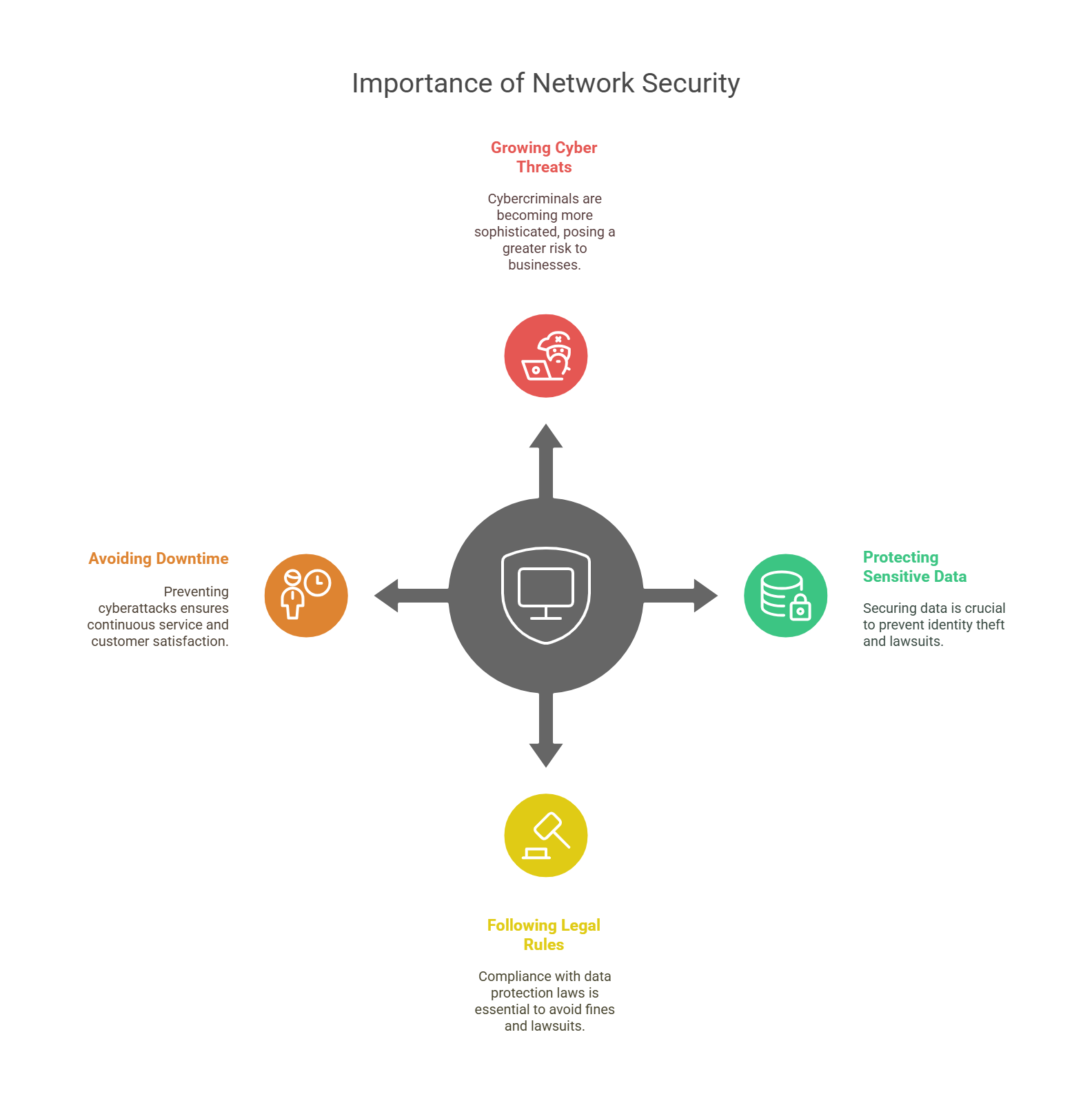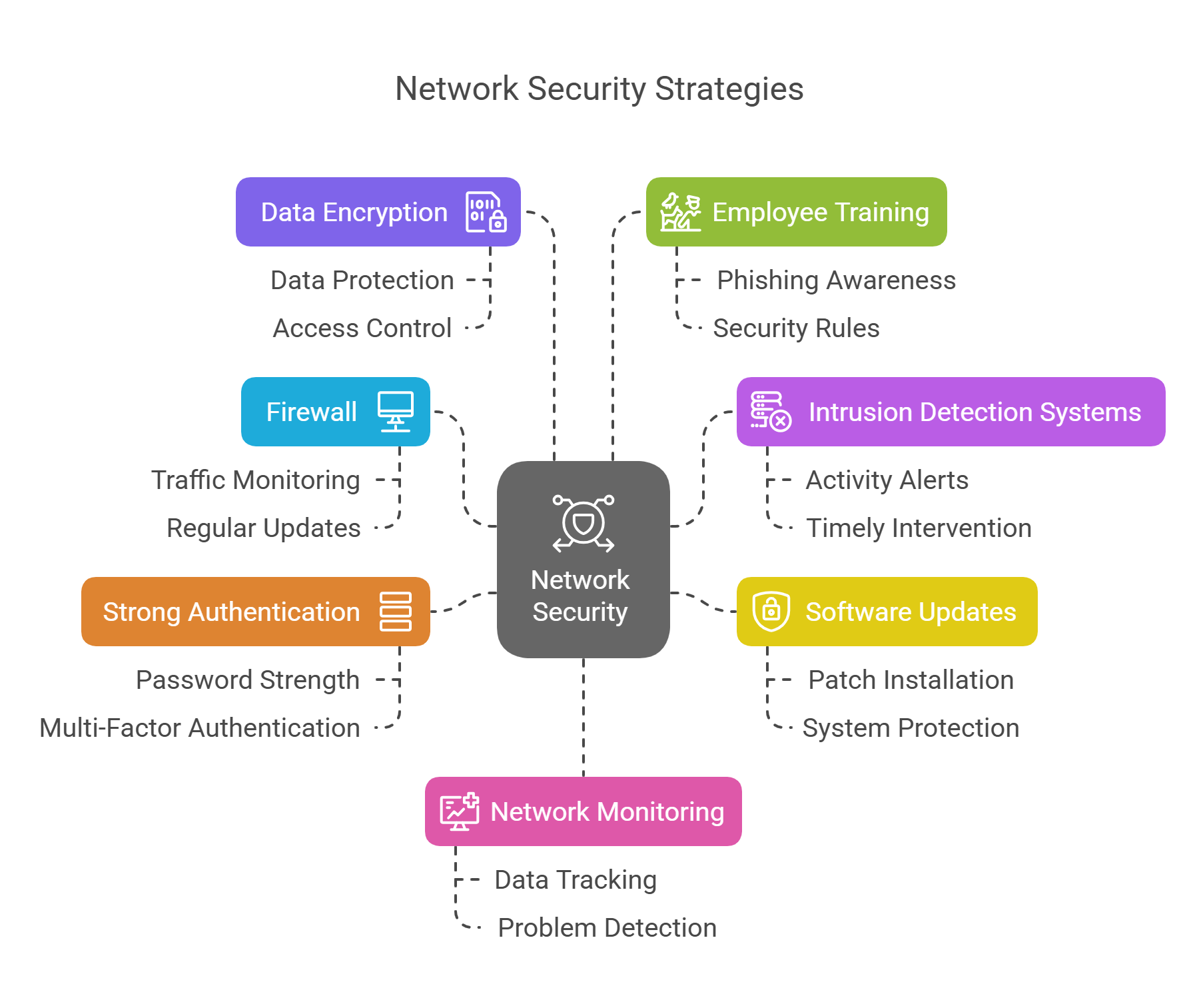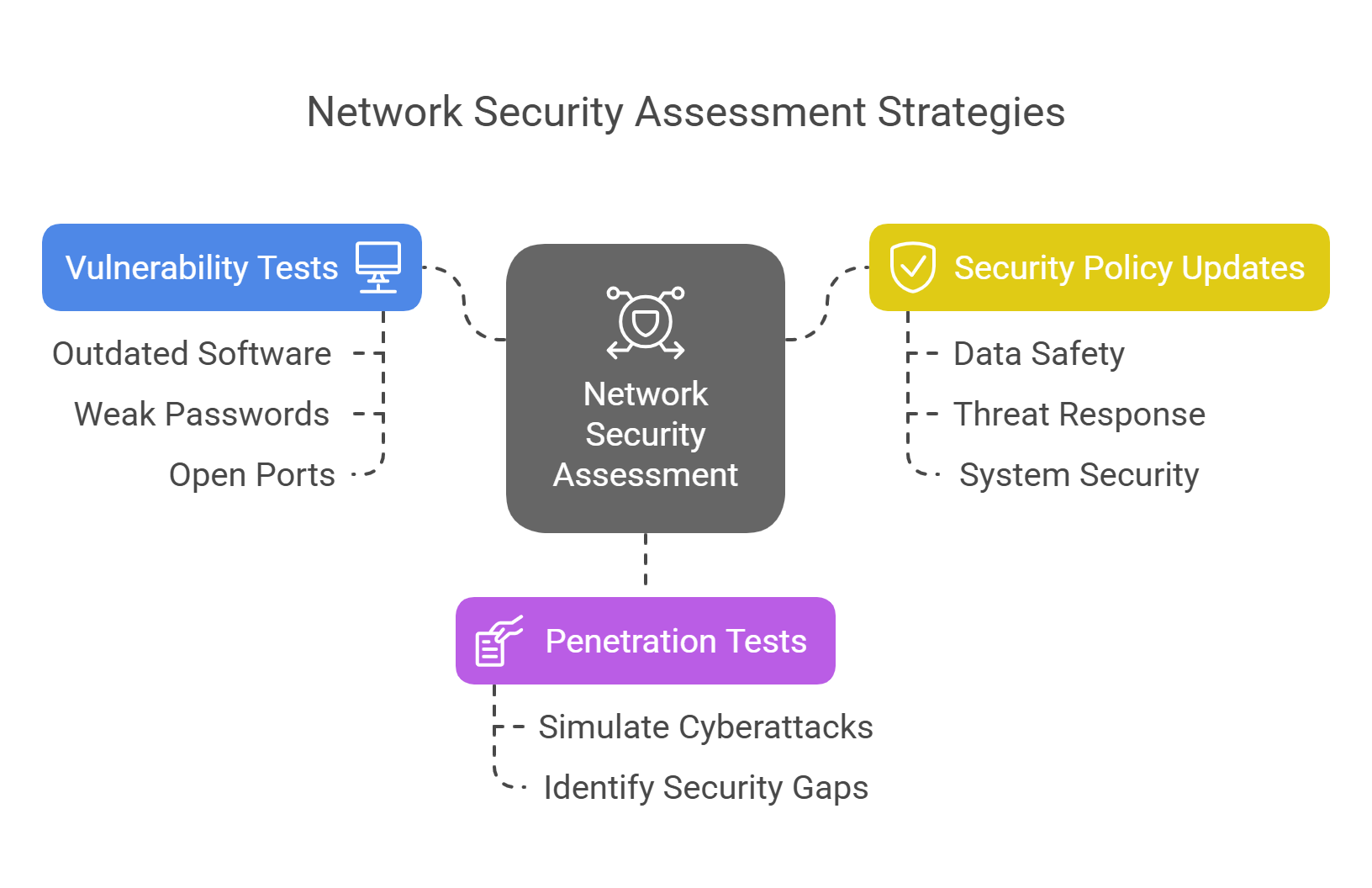Today, businesses rely more on digital tools. But with this comes a bigger risk of cyber threats. Cybercriminals are always changing their methods. Businesses of all sizes must keep their networks safe. Without proper security, businesses could face data leaks, money losses, or damaged reputations. This article explains what network security is, why it matters, the risks businesses face, and how to protect your digital assets.
What Is Network Security?
Network security is all about protecting your business’s network. It stops unauthorized access and harmful attacks. It uses both hardware and software to safeguard against things like malware or hackers. Network security ensures that your systems and data stay safe from both outside and inside threats.
Why Is Securing Your Network So Important?
1. Growing Cyber Threats
Cybercriminals are getting smarter. Malware, ransomware, phishing, and more are becoming harder to stop. No business is too small to be attacked. A single breach can cost money, damage your reputation, or cause legal problems. Securing your network is a must for every business.
2. Protecting Sensitive Data
Companies store important data every day. This includes customer details, financial information, and company secrets. A breach can expose this data, leading to identity theft or lawsuits. Strong network security ensures that this data is always safe.
3. Following Legal Rules
Many businesses must follow strict laws about data protection. Healthcare companies, for example, must follow HIPAA. Businesses in the European Union must follow GDPR. If your network is insecure, you could face fines or lawsuits.

4. Avoiding Downtime
Cyberattacks like DDoS attacks can shut down your services. Even small downtime can cost a lot of money and upset customers. Proper network security prevents these disruptions.
Common Network Threats
Knowing the risks can help you protect your network. Here are some common threats:
1. Malware
Malware is bad software that damages systems. It includes viruses, spyware, and Trojans. Malware steals data or makes systems crash. It can spread across your network and cause big problems.
2. Ransomware
Ransomware locks your data and demands money to unlock it. This can lead to serious financial losses and harm your company’s reputation.
3. Phishing
Phishing tricks people into giving away private information, like passwords or credit card numbers. Phishing can happen through fake emails, messages, or websites.
4. Insider Threats
Not all threats come from outside the company. Employees or contractors can accidentally or intentionally cause harm. Insider threats can lead to stolen data or security breaches.
5. Denial-of-Service (DoS) Attacks
DoS and DDoS attacks overload a network, causing it to crash. These attacks can stop your website or services, causing lost revenue and customers.
Best Ways to Secure Your Network
Here are some simple steps to protect your business:
1. Set Up a Strong Firewall
A firewall monitors your network for unwanted traffic. It helps block harmful data and keeps hackers out. Make sure your firewall is set up correctly and updated regularly.
2. Use Intrusion Detection Systems (IDS)
IDS monitors your network for suspicious activity. They alert you if something strange happens and help you stop it in time.
3. Keep Software Up-to-Date
Old software is an easy target for hackers. Always update your software with the latest security patches to protect your systems.
4. Use Strong Authentication
Weak passwords are a common way for hackers to get in. Use multi-factor authentication (MFA), where users need more than just a password to log in. This makes it much harder for hackers to access your system.

5. Encrypt Your Data
Encryption changes your data into unreadable code. Only those with the right key can access it. Even if hackers steal it, they won’t be able to read it.
6. Train Employees on Security
Employees are the first defense against attacks. Teach them how to recognize phishing attempts, use strong passwords, and follow security rules. A knowledgeable workforce can prevent many attacks.
7. Monitor Your Network
Constant monitoring helps you spot issues early. Use network tools to track your data and detect problems before they become serious.
Assessing Your Network Security
1. Conduct Vulnerability Tests
Scan your network regularly to find weaknesses. Look for outdated software, weak passwords, or open ports that hackers could use to get in.
2. Perform Penetration Tests
Penetration tests simulate cyberattacks to find security gaps. Fixing these gaps before a real attack helps keep your network safe.

3. Update Your Security Policies
Review your security rules often. Make sure everyone knows how to keep data safe, how to respond to threats, and how to secure different systems.
FAQs
1. How often should I update my security software?
Always update your software when new patches are available. This ensures your system stays safe from new threats.
2. What are the best network security tools?
Popular tools include firewalls, antivirus programs, IDS, and encryption. Well-known brands are Cisco, Fortinet, and Norton.
3. How can I protect against insider threats?
Limit access to sensitive data based on employee roles. Use strong authentication, monitor employee activity, and provide regular security training.
Conclusion: Protect Your Network Now
Securing your network is an ongoing job. It’s not just a one-time task. Keep updating your security software, train employees, and monitor your network. By following these steps, you can reduce the risks of attacks and breaches. Don’t wait—start securing your business today to keep your data and systems safe.


